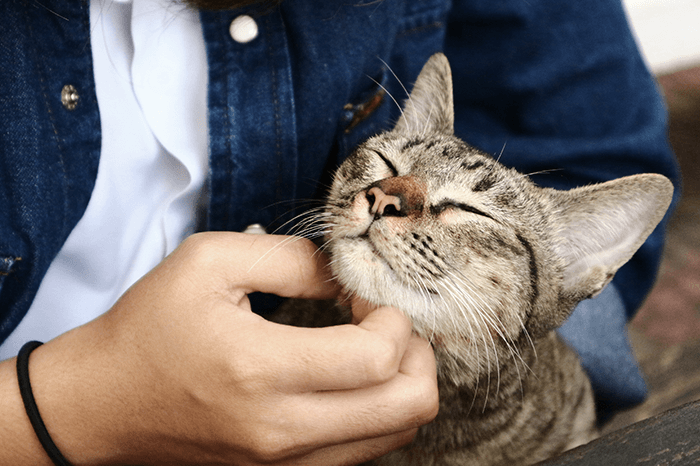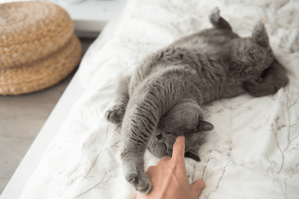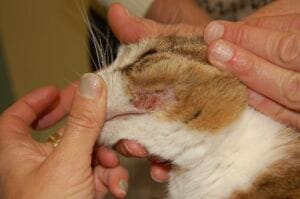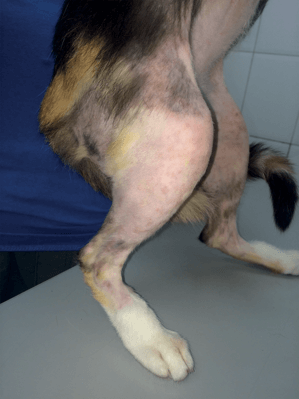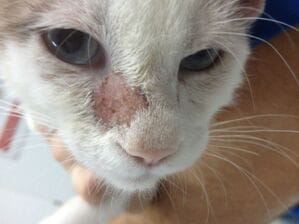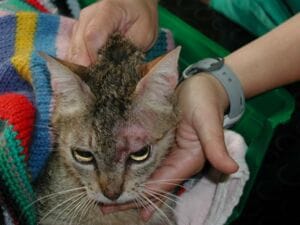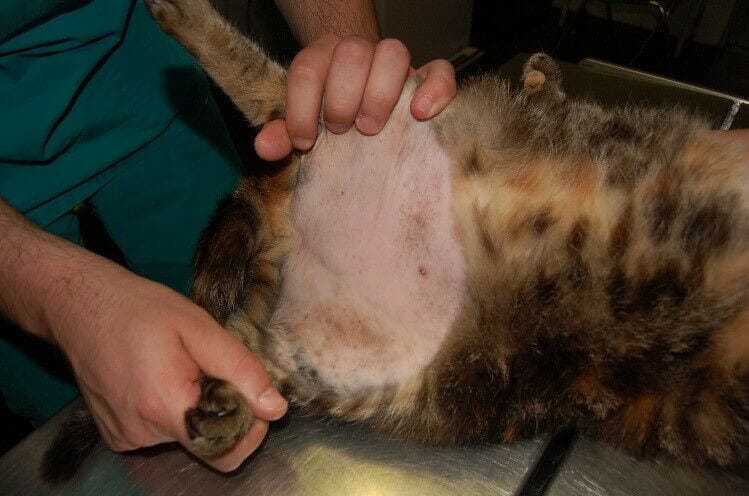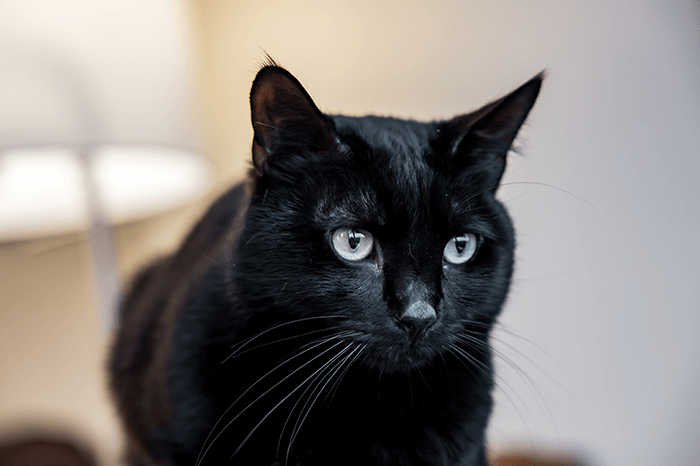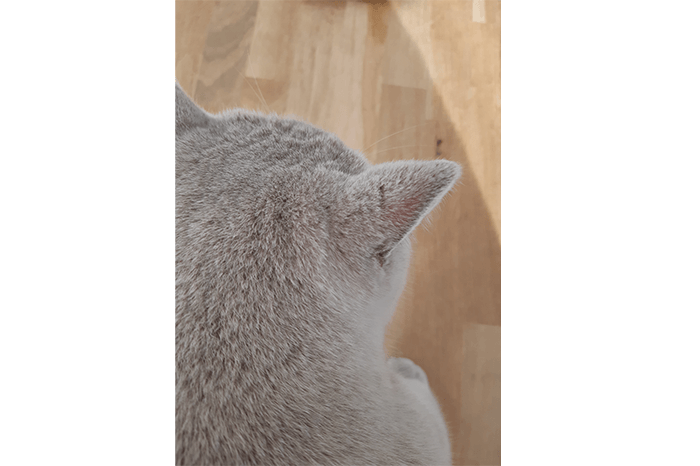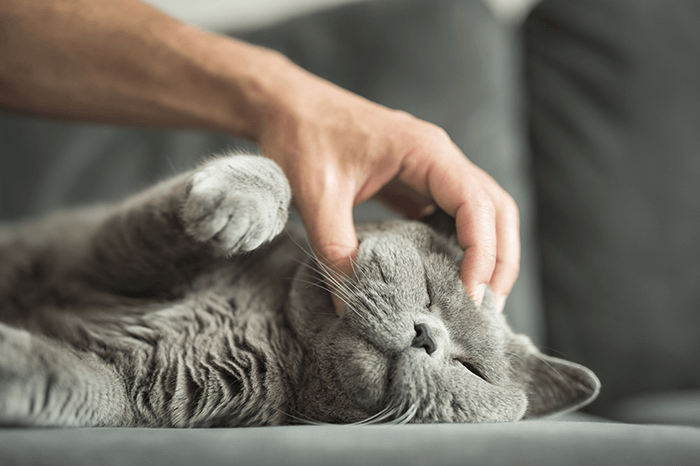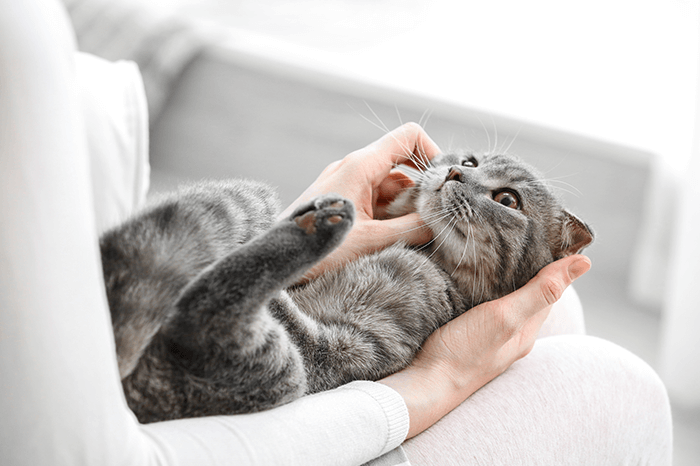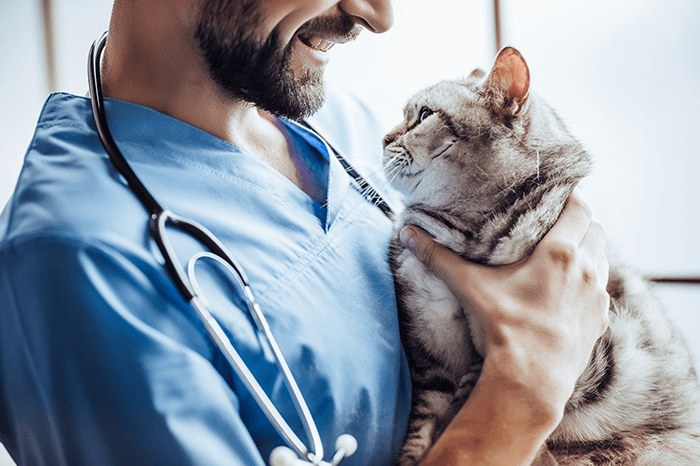Why is a cat losing hair? Get to know all about feline alopecia
Marina G VeterinarianHair loss, apart from the seasonal ones with regular shedding, can be caused by many conditions. Don't hesitate to consult your vet to search for the cause and in the most appropriate treatment.
If you have a feline companion, you can surely recognise shedding as a normal part of your cat’s life, especially during spring and autumn. However, if hair loss results in areas of bald skin, be it in a circumscribed area or all over your cat’s body, this means there may be a problem. As there are numerous reasons that can lead to hair loss, also known as alopecia, if you notice that your cat is losing hair, we recommend that you seek veterinary advice.
How can you tell if your cat is losing hair?
If you notice that the look of your cat’s coat, which was previously lustrous and dense, now seems thin and sparse, your cat may have a problem causing the hair to fall excessively.
It can be categorised as:
- Focal, if it is circumscribed and limited to one area of the body
- Multifocal, if it is circumscribed and present in several areas
- Or generalised if it affects a large area of the body.
How hair loss looks will depend on what is causing it, and it can change over time. For instance, a single focus of alopecia can progress to generalised hair loss if the underlying cause is not identified and treated.
The best way to detect alopecia is to actively look for it, as it may be very subtle at an early stage. A good time to do this would be when your cat sits on your lap for a cuddle or during your regular grooming routine.
If your cat is losing hair excessively, depending on what’s causing it, you may find other skin lesions as well, including:
- Thin skin
- Dry skin and dandruff (scaling)
- Oily skin (seborrhoea)
- Tiny bumps (papules)
- Small, crusted lesions (miliary dermatitis)
- Raw skin (excoriations, erosions or ulcers) and wounds
- Red skin
As hair loss can be caused by self-trauma due to itchiness, monitoring your cat’s behaviour is also very important, as you may be able to notice restlessness, scratching, rubbing against objects and overgrooming.
Cats of the Sphynx breed are naturally hairless. In these cats, hair loss is caused by a genetic mutation that results in hair growth abnormalities, meaning that hairlessness is perfectly normal and not a reason for concern.
What causes cats to lose hair?
There are two main reasons why alopecia can occur, which are:
- Self-trauma, with the cat actively pulling the hair from the skin follicles or breaking it by grooming, scratching or rubbing against objects. When this happens, it’s usually a sign that the cat is itchy and is trying to find ways to relieve the pruritus.
- And problems at the level of the hair follicle or that affect hair growth.
Itchy conditions with cat scratching and licking
If your cat is itchy and losing hair, it’s fair to assume that they are depilating their own hair as they scratch and groom trying to find relief. This is most often what happens in itchy cats, but it may not always be the case!
Common causes for hair loss due to itchiness in cats include mainly:
- External parasites: there are a number of parasites that can cause itchiness in cats, the most common being fleas. Lice and mites, such as Cheyletiella (walking dandruff), Otodectes, and Notoedres (cat scabies), can also cause pruritus of variable intensity, leading to scratching and self-inflicted hair loss.
- Allergies: allergic conditions are common in cats, and allergic cats can suffer from more than one type of allergy. Allergies are usually categorised as environmental, also known as atopic dermatitis, food allergies, or as flea allergy dermatitis, but other insects’ stings, such as wasps and bees, can also trigger an allergic response.
Non itchy conditions leading to hair loss
Just like our own hair, cats’ hair emerges from the skin from hair follicles, and problems at the follicular level can lead to hair loss.
Hair loss due to hair follicle inflammation
There are several causes that can lead to inflammation and injury of the hair follicle, causing the hair to fall. These include for the most common causes:
- Ringworm: also known as dermatophytosis, ringworm is actually a fungal infection and not a parasitic disease. It typically presents as circular areas of hair loss with scales or crusts, which may or may not be itchy. Dermatophytosis is contagious to other animals and people as well.
- Follicular parasites: in some cats, usually those that suffer from underlying health conditions, Demodex, a parasite that lives in the hair follicle or on the surface of the skin, can overgrow and lead to hair loss. This is known as feline demodicosis.
- Immune-mediated disorders: immune-mediated disorders, such as pemphigus foliaceus, for example, result from the immune system not being able to recognise normal cells as normal and attacking them as if they were foreign, which can lead to alopecia.
- Skin trauma: burns and severe abrasive lesions can lead to scarring and permanent hair loss.
Alopecia due to metabolic or systemic disease
There are a number of health conditions not directly related to the skin that can lead to hair loss in cats, such as:
- Endocrine diseases: hyperthyroidism is a common endocrine (hormonal) disorder that causes hormonal changes that can lead to hair loss and other skin alterations in cats, most often thin, dry, flaky skin and a dull coat.
- Tumour-related: this type of alopecia is a skin manifestation of systemic neoplastic conditions (cancer). Paraneoplastic alopecia is related to the tumour’s indirect effects on the body rather than its local growth or invasiveness. It is mostly linked to tumours in the pancreas, bile duct or liver, as well as thymomas.
Alopecia due to injection reaction
Mild cutaneous reactions at the injection site can be seen in cats upon vaccination. Reactions can include hair loss, along with irritation, swelling, erythema and discomfort.
Psychogenic alopecia
Stress, anxiety and painful health conditions, such as osteoarthritis, can lead to excessive grooming and consequent hair loss.
Even though self-inflicted, psychogenic alopecia is usually not due to pruritus, itchiness can be involved either at the start or later on as a consequence of secondary lesions and infection.
Anagen and telogen effluvium
Anagen and telogen effluvium are rare causes of alopecia in cats and refer to hair loss in the growth and resting stages of the hair cycle, respectively.
These are often triggered by stress, which can stem from an underlying health condition, chemotherapy, or surgical intervention, for example.
Alopecia due to feline preauricular and pinnal alopecia
Feline preauricular alopecia is thinning of the hair between the ears and eyes and is quite normal, and common, in any cat. Pinnal alopecia, common in Siamese cats, develops on the outside of the ear pinnae. No treatment is indicated for either; preauricular alopecia is a normal finding in cats, and cats with pinnal alopecia typically regrow hair within several months.
What can you do to help your cat?
If you notice your cat’s hair is falling out, resulting in bald patches of skin or an overall thinner coat, you should book an appointment with your veterinarian.
As feline alopecia can have several underlying causes, reaching a diagnosis can be a challenging and lengthy process, and your vet may need to conduct several tests or even refer your cat to a dermatology specialist.
However, this process is essential to reach the correct diagnosis and start appropriate, individually-tailored treatment.
Even though treatment is always aimed at what’s causing alopecia, there are some topical products that your vet can recommend to alleviate some of your cat’s discomfort, such as shampoos, ointments and spot-ons.
Don’t hesitate to reach out to your vet if you have any concerns, and make sure you have all the in-fur-mation you need to provide your feline friend with the best care!
